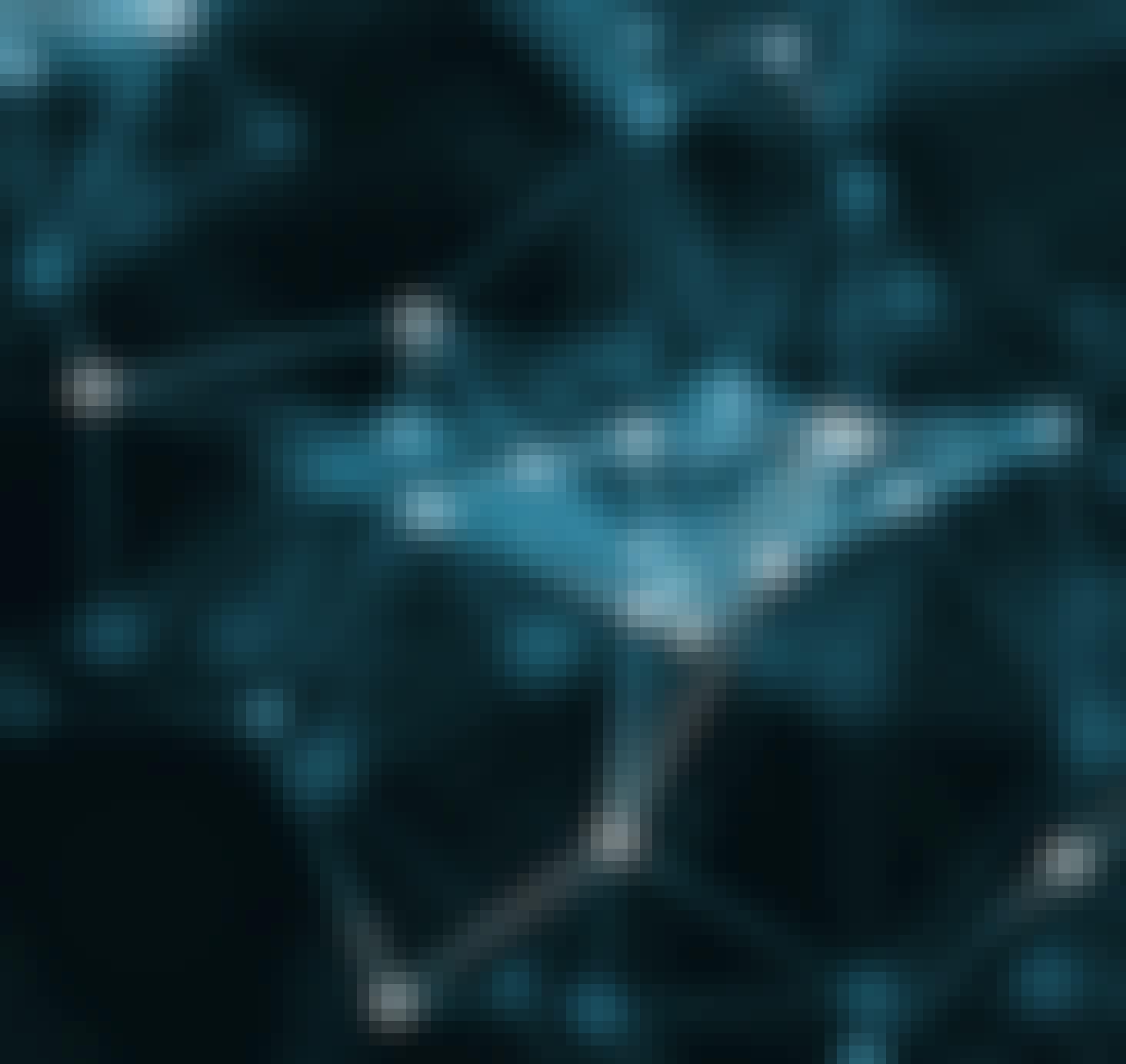- Browse
- Seaborn
Seaborn Courses Online
Master Seaborn for data visualization in Python. Learn to create informative and attractive statistical graphics.
Explore the Seaborn Course Catalog
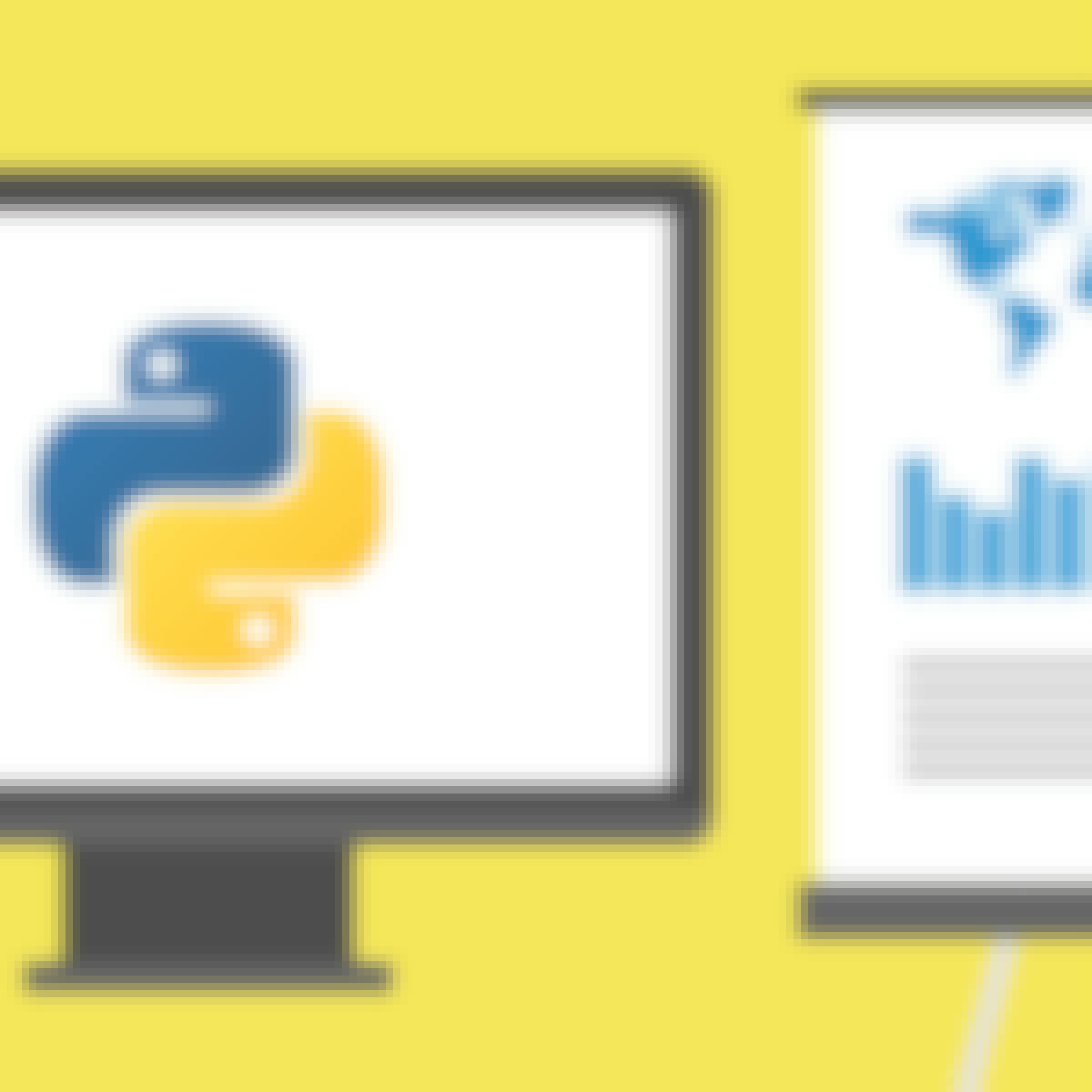 Status: Free TrialFree Trial
Status: Free TrialFree TrialSkills you'll gain: Data Visualization Software, Plotly, Data Visualization, Dashboard, Interactive Data Visualization, Matplotlib, Seaborn, Data Presentation, Data Analysis, Geospatial Information and Technology, Pandas (Python Package), Scatter Plots, Histogram, Heat Maps, Box Plots, Python Programming
4.5·Rating, 4.5 out of 5 stars12K reviewsIntermediate · Course · 1 - 3 Months
 Status: PreviewPreview
Status: PreviewPreviewSkills you'll gain: Seaborn, Data Storytelling, Statistical Visualization, Data Visualization, Data Visualization Software, Matplotlib, Box Plots, Scatter Plots, Statistical Analysis, Heat Maps, Histogram, Python Programming
Beginner · Course · 1 - 4 Weeks
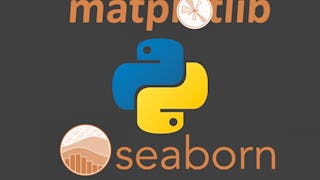
Skills you'll gain: Matplotlib, Histogram, Plot (Graphics), Data Visualization, Seaborn, Scatter Plots, Data Visualization Software, Statistical Visualization, Graphing, Python Programming
4.6·Rating, 4.6 out of 5 stars75 reviewsBeginner · Guided Project · Less Than 2 Hours

Skills you'll gain: Matplotlib, Seaborn, Plot (Graphics), Scatter Plots, Histogram, Data Visualization, Data Visualization Software, Statistical Visualization, Data Analysis, Python Programming
4.5·Rating, 4.5 out of 5 stars30 reviewsBeginner · Guided Project · Less Than 2 Hours

Skills you'll gain: Matplotlib, Data Visualization, Seaborn, Exploratory Data Analysis, NumPy, Data Analysis, Jupyter, Data Science, Machine Learning, Python Programming, Supervised Learning, Algorithms
4.5·Rating, 4.5 out of 5 stars396 reviewsBeginner · Guided Project · Less Than 2 Hours
 Status: Free TrialFree TrialD
Status: Free TrialFree TrialDDuke University
Skills you'll gain: Data Visualization Software, Data Visualization, Data Storytelling, Interactive Data Visualization, Plotly, Matplotlib, Dashboard, Seaborn, Tableau Software, Scatter Plots, Histogram, Google Sheets, Microsoft Excel, Data Analysis, Pandas (Python Package), Python Programming, Cloud Applications, Data Manipulation, Business Communication
4.2·Rating, 4.2 out of 5 stars25 reviewsIntermediate · Course · 1 - 4 Weeks
What brings you to Coursera today?
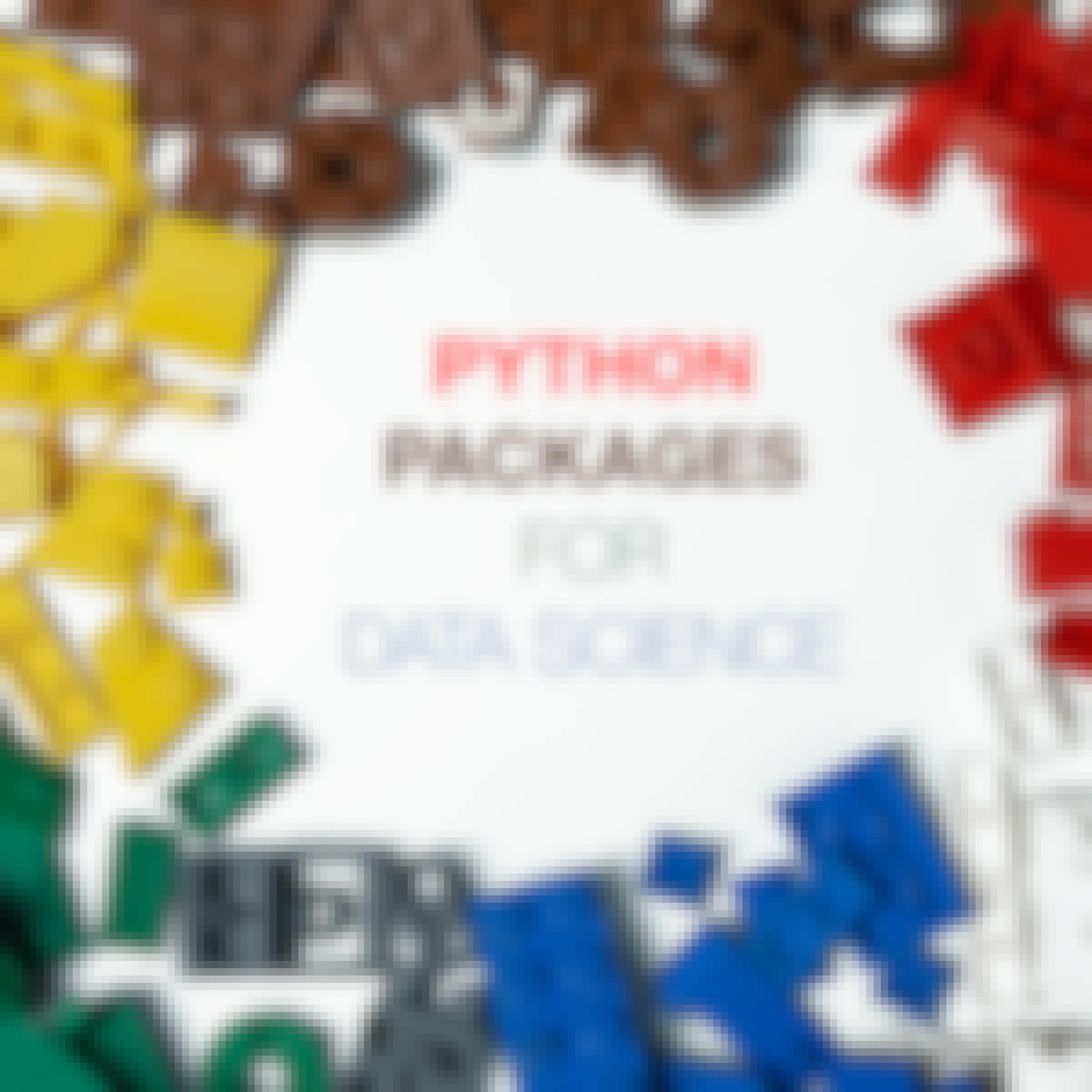 Status: Free TrialFree TrialU
Status: Free TrialFree TrialUUniversity of Colorado Boulder
Skills you'll gain: Matplotlib, Seaborn, Plot (Graphics), Pandas (Python Package), NumPy, Data Visualization Software, Data Visualization, Data Manipulation, Data Science, Histogram, Package and Software Management, Data Import/Export, Python Programming
4.6·Rating, 4.6 out of 5 stars76 reviewsIntermediate · Course · 1 - 4 Weeks
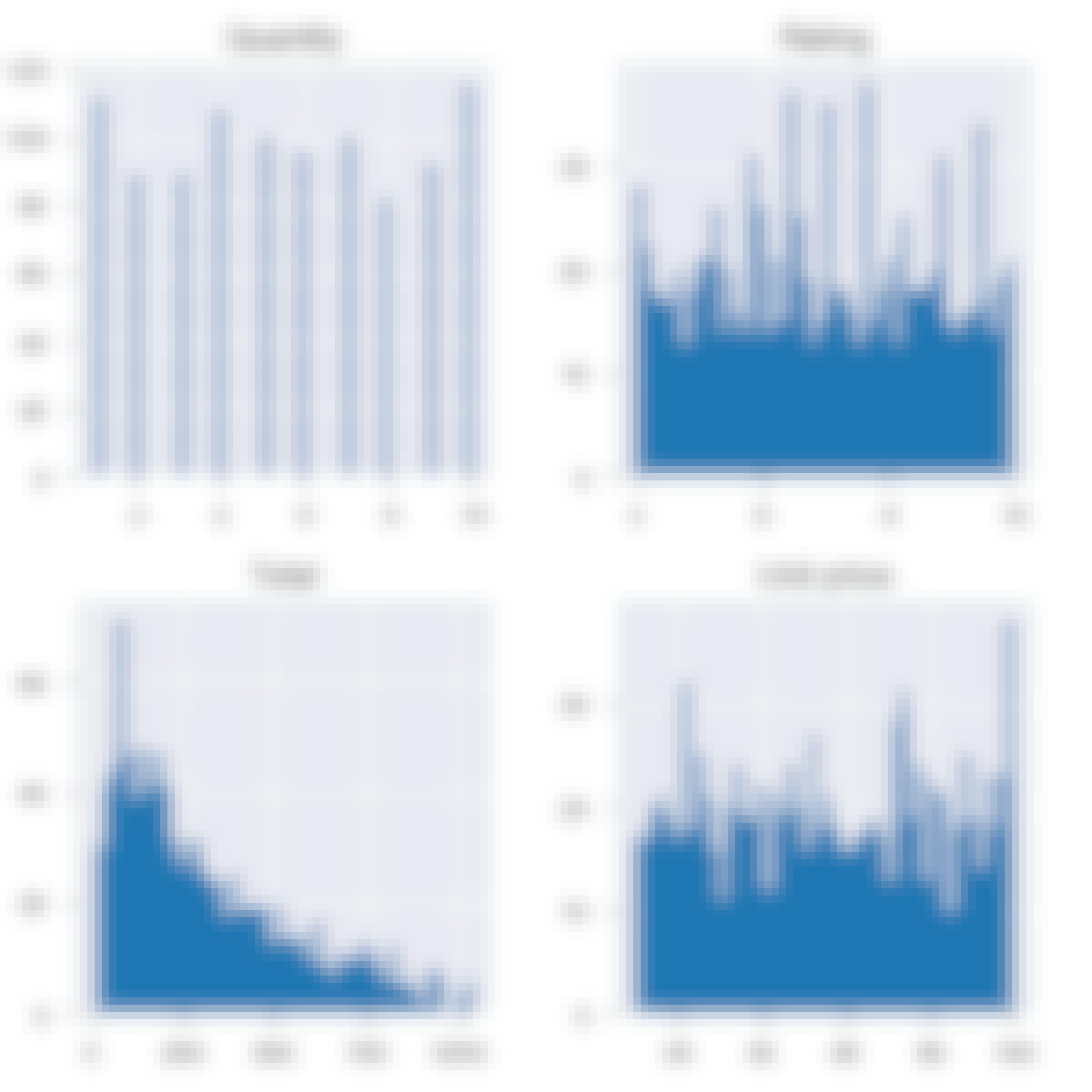
Skills you'll gain: Exploratory Data Analysis, Correlation Analysis, Matplotlib, Seaborn, Data Cleansing, Data Visualization, Pandas (Python Package), Data Analysis, Data Manipulation, NumPy, Statistical Analysis, Python Programming
4.5·Rating, 4.5 out of 5 stars441 reviewsBeginner · Guided Project · Less Than 2 Hours
 Status: Free TrialFree TrialU
Status: Free TrialFree TrialUUniversity of Colorado Boulder
Skills you'll gain: Matplotlib, Statistical Visualization, Seaborn, Data Visualization, Exploratory Data Analysis, Data Presentation, Plot (Graphics), Data Visualization Software, Descriptive Statistics, Data Storytelling, Pandas (Python Package), Statistical Methods, Data Analysis, Statistics, Statistical Analysis, Data Manipulation, Box Plots, Scatter Plots, Correlation Analysis, Python Programming
4.9·Rating, 4.9 out of 5 stars7 reviewsIntermediate · Course · 1 - 4 Weeks
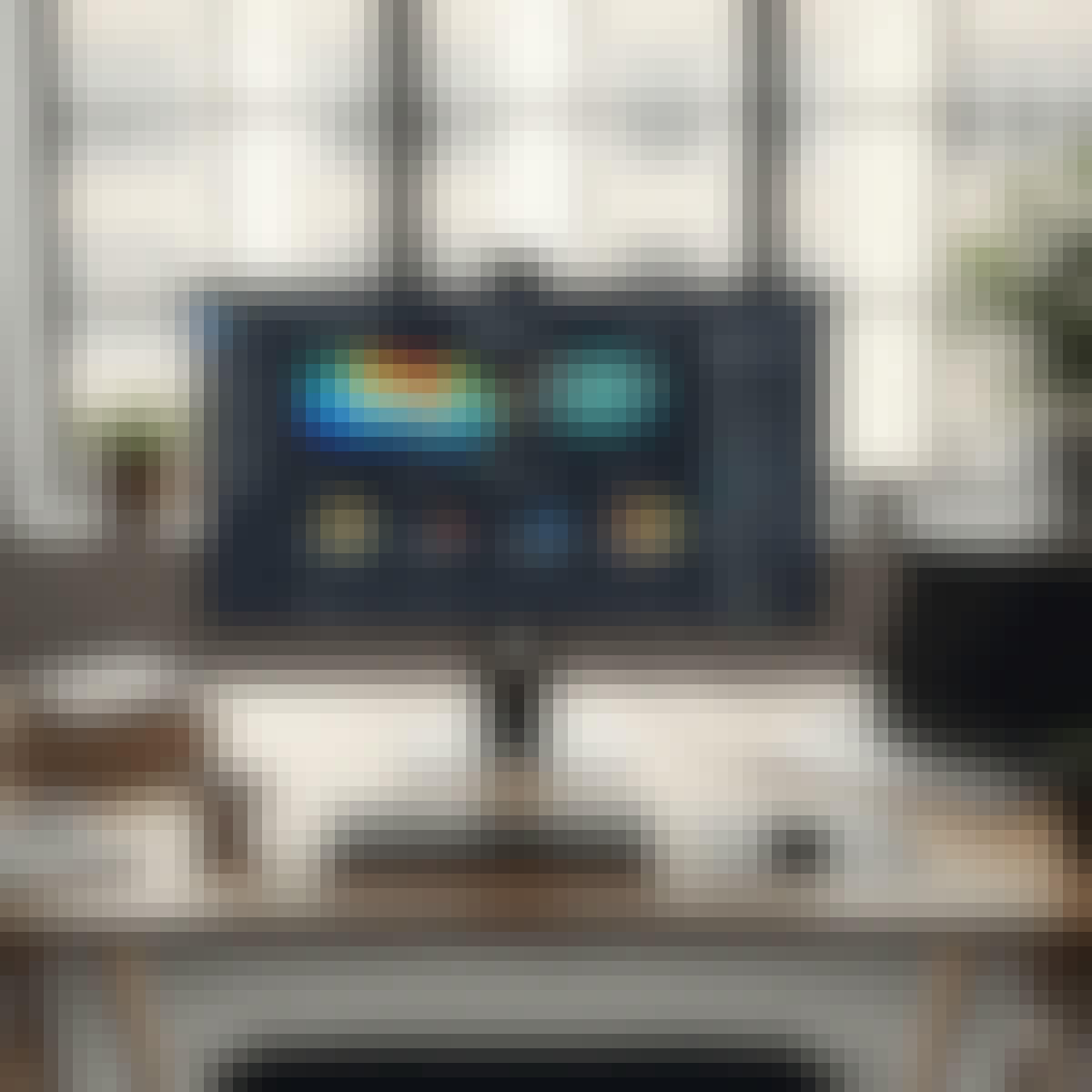 Status: NewNewStatus: Free TrialFree Trial
Status: NewNewStatus: Free TrialFree TrialSkills you'll gain: Seaborn, Data Literacy, Plot (Graphics), Matplotlib, Scatter Plots, Statistical Visualization, Data Presentation, Data Visualization Software, Data Visualization, Box Plots, Exploratory Data Analysis, Data Storytelling, Data Processing, Data-Driven Decision-Making, Statistical Modeling, Statistical Analysis, Descriptive Statistics, Pandas (Python Package), NumPy, Python Programming
Beginner · Specialization · 1 - 3 Months
 Status: NewNewStatus: Free TrialFree Trial
Status: NewNewStatus: Free TrialFree TrialSkills you'll gain: Unsupervised Learning, Seaborn, Matplotlib, Predictive Modeling, Supervised Learning, NumPy, Applied Machine Learning, Predictive Analytics, Dimensionality Reduction, Random Forest Algorithm, PyTorch (Machine Learning Library), Deep Learning, Keras (Neural Network Library), Scatter Plots, Tensorflow, Data Visualization Software, Python Programming, Data Science, Machine Learning, Data Analysis
Beginner · Specialization · 1 - 3 Months
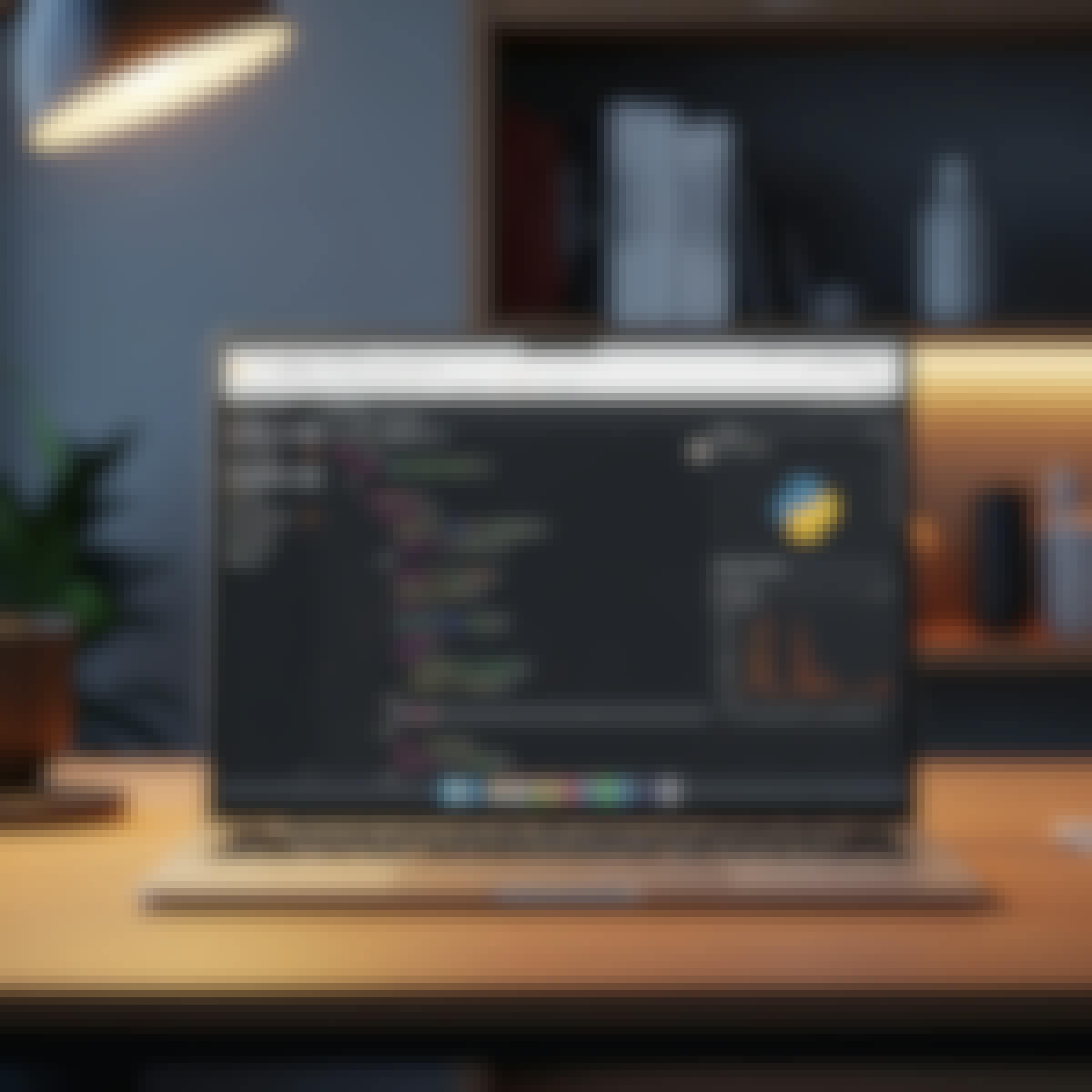 Status: NewNewStatus: PreviewPreview
Status: NewNewStatus: PreviewPreviewSkills you'll gain: Tensorflow, Scikit Learn (Machine Learning Library), Machine Learning, Feature Engineering, Deep Learning, Matplotlib, Jupyter, Python Programming, Data Processing, NumPy, Data Cleansing, Image Analysis, Artificial Neural Networks, Seaborn, Development Environment, Pandas (Python Package), Regression Analysis
Mixed · Course · 1 - 3 Months
Seaborn learners also search
In summary, here are 10 of our most popular seaborn courses
- Data Visualization with Python: IBM
- Seaborn: Visualizing Basics to Advanced Statistical Plots: Coursera
- Python for Data Visualization: Matplotlib & Seaborn: Coursera
- Python for Data Visualization:Matplotlib & Seaborn(Enhanced): Coursera
- Logistic Regression with NumPy and Python: Coursera
- Data Visualization with Python: Duke University
- Python Packages for Data Science: University of Colorado Boulder
- Exploratory Data Analysis With Python and Pandas: Coursera
- Data Understanding and Visualization: University of Colorado Boulder
- Seaborn Python Data Visualization & Analysis: EDUCBA
Frequently Asked Questions about Seaborn
Seaborn is an open-source Python data visualization tool that's based on matplotlib, a comprehensive Python library used to create interactive, static, and animated visualizations. Using seaborn gives you a way to bridge the gap between insight and data. It gives users a high-level interface to make statistical graphics, building upon matplotlib, and integrating with pandas data structures. It enables users to explore data with plotting functions that operate on dataframes. Users can focus more on what the elements of plots mean instead of how to draw them thanks to seaborn's dataset-oriented, declarative API.
Before you tackle learning seaborn, you should have a good foundation in the basic terminologies of computer programming. It also helps to have a firm grasp of Python or other programming languages. If you’re familiar with working with matplotlib, that’s a bonus too. If you’ve never worked with Python before, it might help to take a beginner-level course to develop those skills before learning seaborn.
Some common careers in data visualization include data visualization engineer, which has a median annual salary of $92,305 in the US as of 2021, according to PayScale. Other careers that may use seaborn include data analyst, business intelligence analyst, and data scientist. Because seaborn is a data visualization tool, it opens the door to a variety of careers working with data. Data is a hot field, with demand increasing for workers who can leverage the power of big data, according to The Balance Careers.
You can use online courses on Coursera to build a solid foundation in using Python and understanding data visualization in addition to learning how to use seaborn. While many of the courses are at the intermediate or advanced level, there are also courses available that are geared toward beginners. You may have an opportunity to produce charts using seaborn while learning more about data science and machine learning and developing hands-on skills such as dropping correlated features, implementing feature selection, and building boosts tree classifiers.



